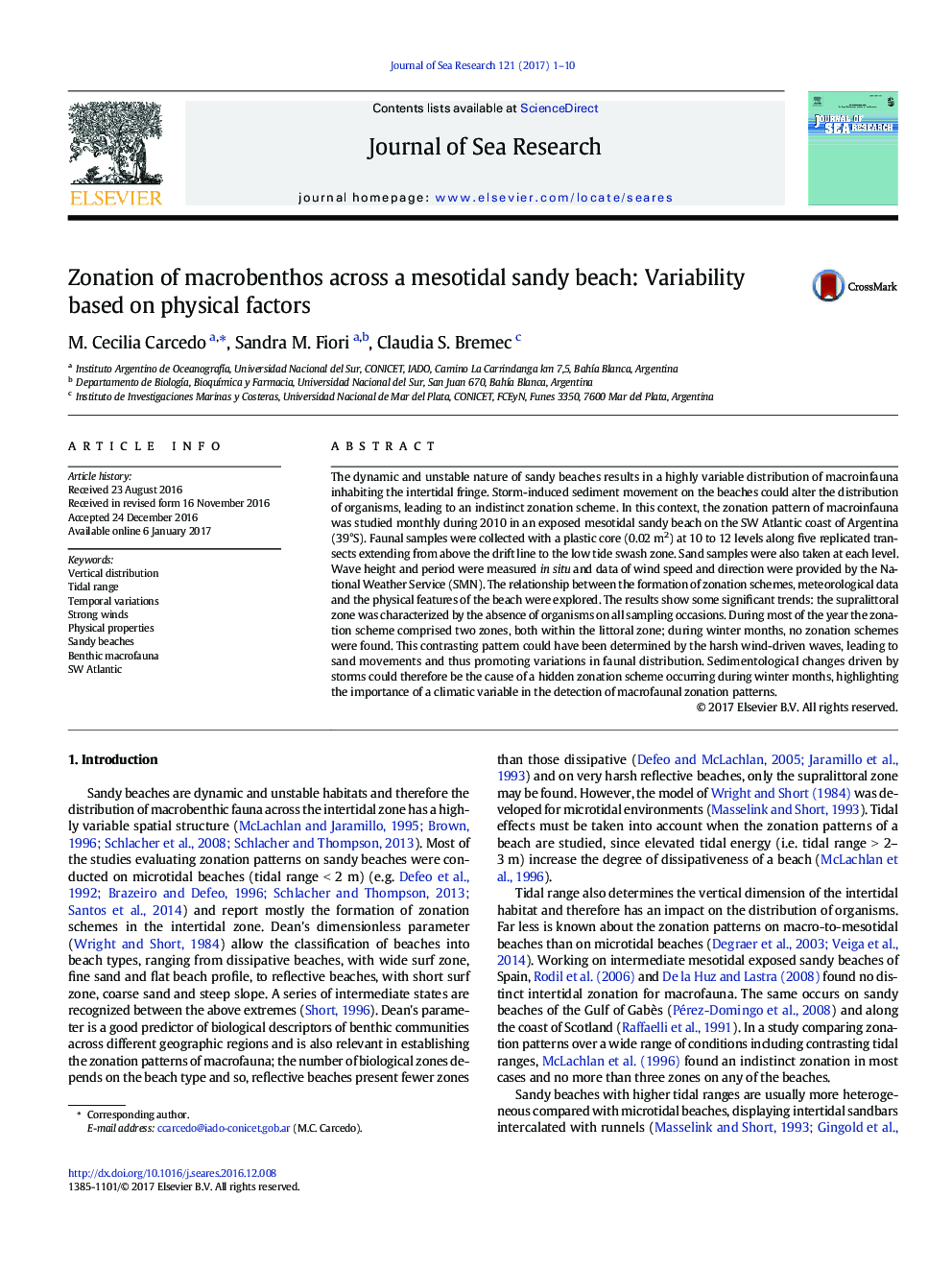| کد مقاله | کد نشریه | سال انتشار | مقاله انگلیسی | نسخه تمام متن |
|---|---|---|---|---|
| 5766034 | 1627454 | 2017 | 10 صفحه PDF | دانلود رایگان |
- The distribution of macrofauna across the intertidal varies widely throughout the year.
- The supralittoral zone does not constitute a biological zone.
- The zonation schemes comprised two zones, both within the littoral zone.
- Harsh wind-driven waves could be the cause of a hidden zonation scheme in winter.
- Storms are important factors involved in the detection of faunal zonation patterns.
The dynamic and unstable nature of sandy beaches results in a highly variable distribution of macroinfauna inhabiting the intertidal fringe. Storm-induced sediment movement on the beaches could alter the distribution of organisms, leading to an indistinct zonation scheme. In this context, the zonation pattern of macroinfauna was studied monthly during 2010 in an exposed mesotidal sandy beach on the SW Atlantic coast of Argentina (39°S). Faunal samples were collected with a plastic core (0.02 m2) at 10 to 12 levels along five replicated transects extending from above the drift line to the low tide swash zone. Sand samples were also taken at each level. Wave height and period were measured in situ and data of wind speed and direction were provided by the National Weather Service (SMN). The relationship between the formation of zonation schemes, meteorological data and the physical features of the beach were explored. The results show some significant trends: the supralittoral zone was characterized by the absence of organisms on all sampling occasions. During most of the year the zonation scheme comprised two zones, both within the littoral zone; during winter months, no zonation schemes were found. This contrasting pattern could have been determined by the harsh wind-driven waves, leading to sand movements and thus promoting variations in faunal distribution. Sedimentological changes driven by storms could therefore be the cause of a hidden zonation scheme occurring during winter months, highlighting the importance of a climatic variable in the detection of macrofaunal zonation patterns.
Journal: Journal of Sea Research - Volume 121, March 2017, Pages 1-10
